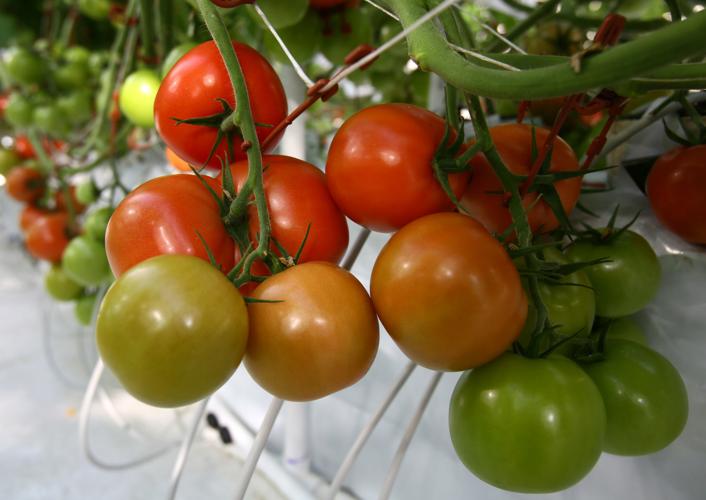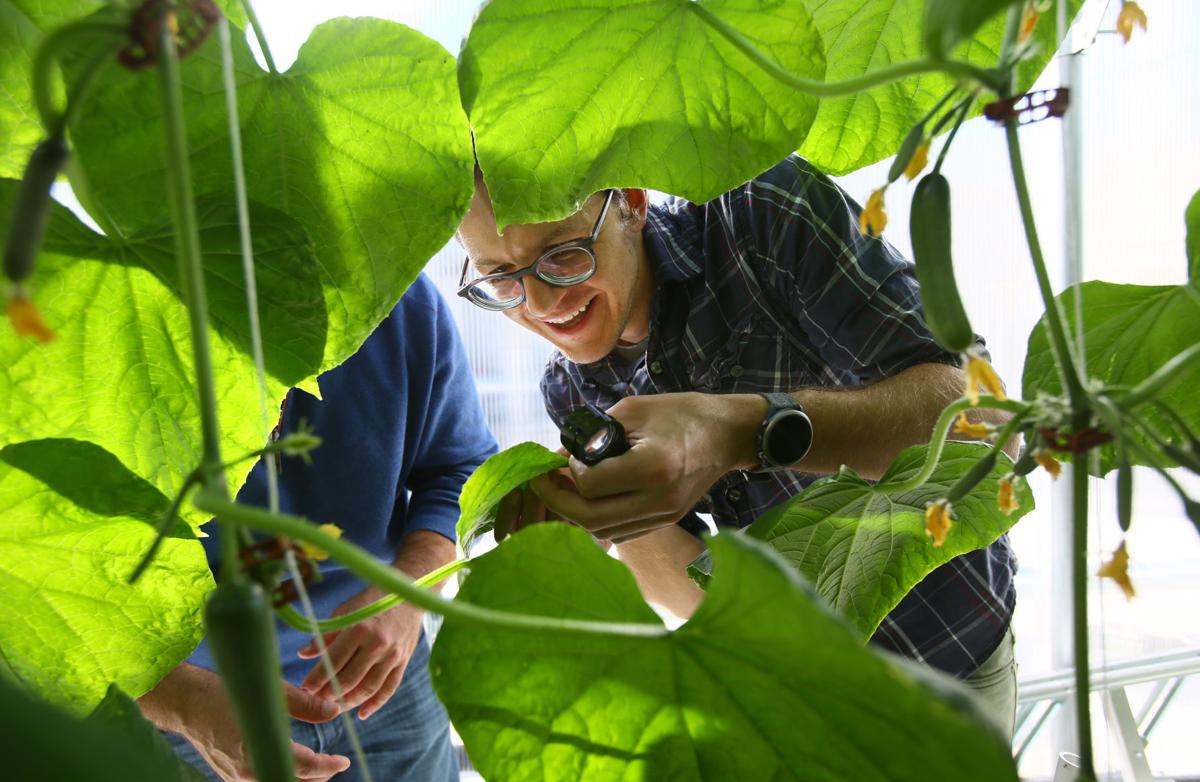A new greenhouse on the roof of the UA Student Union Memorial Center is producing what will amount to thousands of pounds of produce each year.
And all of it goes to the school’s Campus Pantry, an organization that provides free food to students and staff members who need assistance.
Bridgette Nobbe, graduate assistant for the pantry, said the greenhouse allows the 550 students and staff members who use the pantry each week to access fresh produce that they normally would not receive.
“It gives more variety to the items we have in general and we can rely on them to always be fresh,” Nobbe said. “That’s extremely beneficial, because the more we can give these students the better. The need is there. We’re so happy that we can provide this.”
While the greenhouse has only been in operation this semester, it’s on track to produce 3,000 pounds of mini cucumbers, 1,000 pounds of slicing tomatoes, 2,000 pounds of cherry tomatoes and 400 pounds of bell peppers by the end of next semester.
While Todd Millay, senior director of the Arizona Student Unions, came up with the idea of pairing a rooftop garden with Campus Pantry, he said the end result was a work of collaboration. Students designed the greenhouse, Facilities Management personnel built it and students operate it.

The greenhouse atop the UA Student Union, which started this semester, is on track to produce 3,000 pounds of mini cucumbers, 1,000 pounds of slicing tomatoes and 400 pounds of bell peppers.
“We thought well, why don’t we get serious and do something really cool. Then we thought well, why not ask the students what kind of garden they want to build? We have a roof, why don’t we do something bigger? So we launched a case competition,” Millay said.
The competition brought 125 students together to submit their plans for what the greenhouse should look like. Given a budget of $50,000, the five finalists presented their blueprints to a panel of judges.
Millay said the greenhouse, which took about a year to build, cost closer to $150,000 than the original $50,000 budget. It was funded from a variety of sources, including grants from the UA’s Green Fund and student service fee and support from the Student Unions, Shamrock Farms and Coca-Cola. Polytex Inc. provided a discount on paneling for the greenhouse, and Wadsworth Control Systems provided a discount on the sensors and control systems the greenhouse runs on.
While the process was longer and more complicated than Millay had anticipated, he said the end result was worth it.
“It’s been the most meaningful work I’ve done in the past three years, just because the nature of it, not just the food, but the students who need it,” Millay said. “And we’re providing training for amazing students.”

Speedella tomatoes growing in the greenhouse on the roof of the University of Arizona Student Union on Dec. 3, 2018.
Quinn Waltz is one of those students. A senior majoring in agricultural technology management, he’s also the greenhouse manager, organizing the small group of students who work in the greenhouse and make sure the greenhouse runs smoothly and efficiently.
“Our main goal is to harvest every week and get all the produce as fast, as fresh as possible down to Campus Pantry for the students who need it,” Waltz said. “This is the first time that we’ve got to have something like this, a rooftop greenhouse. I’ve worked in a commercial greenhouse before, but this is more high-tech and upscale, (with) more innovations.”
Some of those innovations include the recirculating system that pumps nutrients to the plants. The garden is hydroponic, meaning water is used instead of dirt, and two tanks mix and pump nutrients out to the rows of plants. What makes the system special is that instead of discarding the liquid, it’s returned to the tanks and used again, conserving water.
“This is our first time dealing with a recirculating system, so there are issues that come along with that,” Waltz said.

The Student Union greenhouse garden is hydroponic, with two tanks mixing and pumping nutrients out to the rows of plants.
Waltz said the students had to learn how to balance certain aspects of the growing process, such as maintaining balanced pH levels. “That’s where we find some struggles to keep the system balanced. We’re still learning,” Waltz said.
The greenhouse doesn’t use chemicals to control pests, relying on biological solutions instead. Waltz said that’s one reason it’s important to check on the greenhouse at least once a day, because anything could happen. The students can access the sensor data on their smartphones, which helps them monitor things like temperature and humidity remotely.
“This is on your mind all day, I’m in class just like ‘Oh, my gosh, the plants are growing right now, I have to go check on them,’” Waltz said.
The thing that takes the most time, however, is simply giving each plant the attention it needs. Waltz said each day the plants have to be trained to grow the right way, because they grow so quickly. The cucumbers can grow two feet in a week, and the students pollinate the plants by hand.
“It takes a lot of hours. You have to use your time wisely,” Waltz said. “It’s a lot of responsibility and effort to run a greenhouse, so you have to find the right students who are dedicated and who want to push through and put their heart into it.”
While Waltz puts in heart into it, he said he also gets a lot out of the work, including hands-on experience in business, food safety, agriculture and technology that would be hard to come by elsewhere.
“This is only the beginning. We have so much potential for growth, both here and in the industry itself,” Waltz said. “I want this to run for years and years, maybe build another greenhouse, have it jump to another university and start a trend.”

Vines of felicity tomatoes flourish in the greenhouse. “This is only the beginning,” says one of the student gardeners.

The greenhouse needs to be checked at least once a day, and students can access sensor data on their smartphones.










